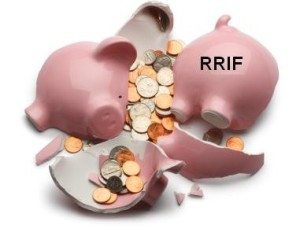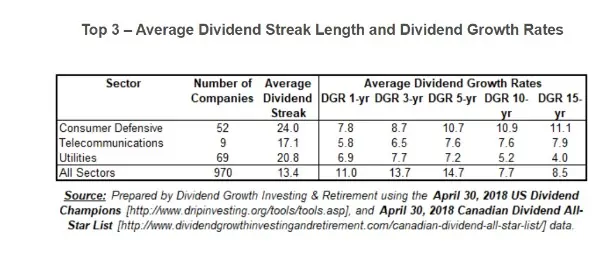Should you Plan your Retirement Savings according to the 4% Withdrawal Rate Rule or 70% of Pre-Retirement Income Rule?

By Steve Lowrie, CFA
Special to Financial Independence Hub
Last month, we kicked off our “Real Life Investment Strategies” series by taking on the geopolitical world. Today, we’re going to tackle an FAQ that hits closer to home.
Whether you’re an accumulator or preparing for retirement, how do you plan for saving AND spending your hard-earned cash in retirement?
My Answer: It depends.
All those popular retirement spending rules you hear about in the popular press or through your favourite financial guru really should be called guidelines. Augmenting blunt estimates with finer-pointed planning may not be as quickly accomplished. But it’s a far more effective way to plan for how much to save as you accumulate wealth, and how much to spend as you withdraw it. In fact, it’s best to consider retirement spending as being a variable process, versus a one-and-done equation.
Which is why it depends.
Let’s bend some Rules: the 4% Withdrawal Rate Rule & the 70% Pre-Retirement Income Rule
I do feel most popular retirement spending rules were made to be broken: or at least bent to fit your specific assumptions, and adjusted over time as you encounter various phases in your retirement lifestyle.
Take the 4% Retirement Rule, for example. The catchphrase has been around since 1994, when William Bengen published his Journal of Financial Planning paper, “Determining Withdrawal Rates Using Historical Data.” In it, Bengen suggested that under certain assumptions, retirees could avoid outliving their money by withdrawing no more than 4% of their wealth in the year they retire, and then adjusting this figure annually for inflation.
The 70% Retirement Rule is another popular retirement spending hack. Here you plan to spend no more than 70% of your pre-retirement income in retirement and save accordingly toward that figure. This is supposed to work because, in theory, retirees spend less in retirement to fulfill their lifestyle wants and needs.
There are many similar shortcuts for guesstimating your retirement numbers. It’s tempting to accept these simplified rules as close enough and assume they’re all you’ll need to proceed. But the thing is, while Bengen’s analysis was rightfully lauded as an innovative new way to think about withdrawal rates in retirement, I don’t think even he meant for the 4% figure to serve as a hard and fast rule for every retiree, under every assumption, throughout their entire retirement (during which your lifestyle is likely to evolve).
The same goes for the 70% rule, and similar retirement rules.
Financial Talking Heads’ Rants on Retirement withdrawal Rate and other Shenanigans
In lieu of rules of thumb, people are also known to follow the shotgun advice of popular financial gurus who spout sweeping generalities as perfect solutions for one and all.
A prime example is Dave Ramsey of The Ramsey Show, who recently assured listeners that an 8% retirement withdrawal rate should “last forever,” as long as you invest as he suggests. He said a 4% spending rate was “asinine,” based on calculations generated by “super nerds,”“goobers,” and “morons who live in their mother’s basement with a calculator.” He then goes on a Wizard of Oz tirade about flying monkeys stealing your ruby slippers. Seriously, you can’t make this stuff up. (Check out 01:19:20 in The Ramsey Show’s “You Can’t Win with Money if You Don’t Know Where Your Money Is” podcast episode.)
Ramsey’s math is simple, which makes it appealing and easy to understand: “If you’re making 12 [percent] in good mutual funds and the S&P is averaging 11.8, and if inflation for the last 80 years is 4%, if you make 12 and you need to leave 4% in there for average inflation raises, that leaves you eight. So, I’m perfectly comfortable drawing eight. But if you want to be a little bit conservative, seven. But, sure, not five or three.”
In a Rational Reminder rebuttal episode, “Retiring Retirement Income Myths with the Retirement Income Dream Team,” my super-nerd friends (David Blanchett, the Managing Director and Head of Retirement Research for PGIM DC Solutions; Michael Finke, a distinguished professor of wealth management at the American College of Financial Services; and Wade Pfau, Director of Retirement Research at McLean Asset Management) offer what I believe is a considerably more realistic assessment of the market’s risks and expected rewards over time, with no monkey business involved:
Without going too heavily into the math, the two main counter arguments against an 8% withdrawal rate from the Retirement Income Dream Team are:
- There can be large differences between geometric returns (what you earn in an investment) and arithmetic returns (the simple average). For example, an average 12% return doesn’t mean that a retiree’s portfolio grows by 12% per year. If $1 million invested in stocks falls by 20%, you now have $800,000. If it rises by 25% the next year, you’re back up to $1 million. The average return of -20% and positive 25% is 2.5%. But you still only have a million bucks. Your actual return was zero.
- A 100% stock portfolio significantly increases the sequence of returns risk. For example, a U.S.-based investor, owning U.S. stocks in the 2000s and following an 8% withdrawal rule would have run out of money in as little as 13 years.
Source: https://www.thinkadvisor.com/2023/11/13/supernerds-unite-against-dave-ramseys-8-safe-withdrawal-rate-guidance/
I would add from a behaviour side of things, that a 100% stock portfolio, especially during retirement would be virtually impossible to stick with.
When it comes to Retirement Savings, One Size rarely fits all
Besides, don’t you want your retirement numbers to be based on personalized levels of evidence and reason, instead of hope and hype? I know I do, which is why I treat sweeping assumptions and general rules of thumb as starting rather than ending points.
By necessity, generic advice involves making assumptions, often huge ones, that may or may not reflect your own realities. The original 4% Rule, for example, assumed the investor is investing their retirement nest egg in 50% stocks/50% bonds, held entirely in tax-sheltered accounts. It also assumed a 30-year retirement.
Not everyone wants or needs to invest this conservatively. At the other end of the spectrum, Ramsey appears to assume you’re going to put your entire nest egg in the U.S. stock market, mostly large-company growth. He also seems to assume (quite erroneously) that we can rely on this market to deliver an average 12% pre-inflation return forever.
My take: There’s nothing nerdy about wanting to avoid hoarding or squandering your wealth. If your retirement years are short enough, your income remains ample enough, and your market timing is lucky enough, spending 8% annually in retirement might be right for you. For others, even 4% is overly optimistic. Either way, I wouldn’t bank on any given number without first engaging in some serious reality checks, and revisiting your plans as you proceed.
Let’s return to our fictional investors to illustrate how real-life retirement planning, withdrawal rate, and spending works. Continue Reading…








